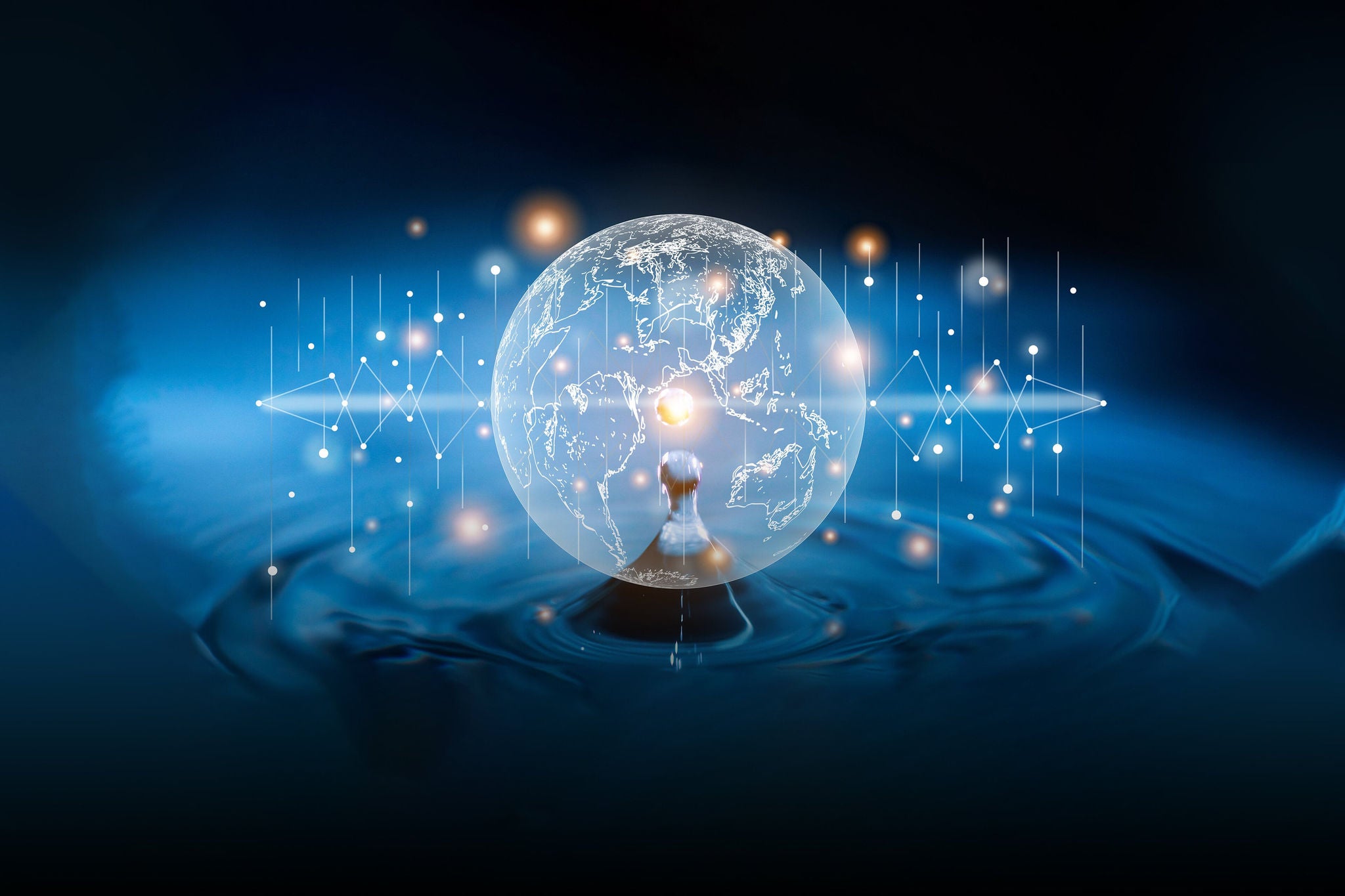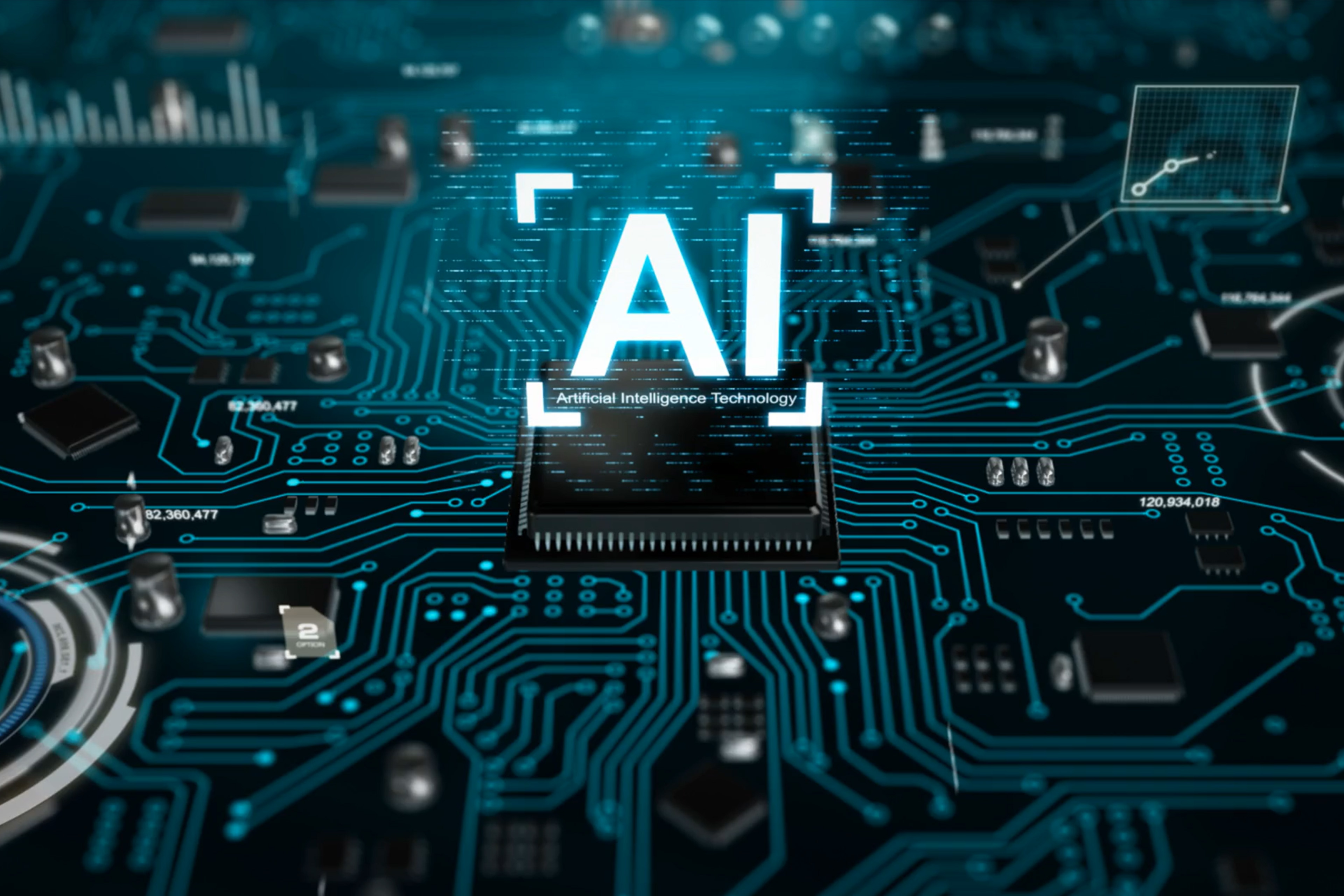EY refers to the global organization, and may refer to one or more, of the member firms of Ernst & Young Global Limited, each of which is a separate legal entity. Ernst & Young Global Limited, a UK company limited by guarantee, does not provide services to clients.

Digital technologies, including AI, ML and IoT, are making water systems efficient and sustainable.
In brief
- Optimizing water usage is a rising problem for industries and institutions across the globe.
- Companies and buildings are employing data-driven applications, AI and Industrial IoT to treat wastewater and harvest rainwater.
- Advanced AI and ML, and digital twin technologies are used to detect water leakages and predict situations in water networks.
- City administrations are leveraging AI-based flood predictions and forecast systems to take necessary actions and reduce calamities and destructions.
Water scarcity is a global challenge. According to recent data from the World Bank, India has 18% of the world’s population but only 4% of the water resources, making it one of the most water-stressed countries in the world. A NITI Aayog report predicted that 21 Indian cities—including Delhi, Bengaluru, Hyderabad, Mumbai, and Chennai, the largest urban centers in India—will run out of groundwater by 2030, affecting 100 million people and leaving 40% of India’s population without access to drinking water. Water shortage will not only impact India’s population but also the national GDP. Water scarcity, along with climate change, could cost many countries up to 6% of their GDP and spark conflict, warns a World Bank report.
As the demand for water increases, organizations across the world are turning to technological solutions. New and emerging digital technologies including AI, IoT sensors, data analytics, smart water grids, and smart water management solutions are being used to build more efficient water management infrastructure, wastewater treatment plants, and irrigation systems. AI and accurate data analytics are also helping various organizations and governments manage hydrological issues like flooding and groundwater depletion. While various solutions are at different levels of use and development, most of the effort is at present centered around two aspects: water recycling and rainwater harvesting, and detection of leakage and theft.
Water recycling, rainwater harvesting
Effluent treatments are complex processes. Ensuring the quality of treated water is challenging and the operational cost of the plants is high. Data-driven intelligent applications clubbed with AI, Machine Learning (ML) and Industrial Internet of Things (IoT) technologies are providing optimal performances, reducing the consumption of energy and chemicals in sewage treatment plants, rainwater harvesting systems, and ultrafiltration projects. This not only reduces the cost of operation but also improves safety.
New ML frameworks include Deep Neural Network (DNN) models, Random Forest models, and Variable Importance Measure (VIM) analysis. These frameworks study various effluent parameters like suspended solids, sludge, and chemicals along with operational parameters such as time lags and temperature. Their aim is to help develop control strategies to increase the quality of treated water while reducing operational costs.
In many cases, aeration is responsible for more than half of the total energy consumed in water treatment plants. New AI tools can analyze the plant’s data and suggest the best set points for aerators to reduce energy consumption up to 30%. Data collected from RO plants, sewage treatment plants, and cooling towers is transmitted to cloud-based analytics platforms to predict performance, detect faults, and provide troubleshooting insights.
Larger establishments are using efficient data and communication infrastructures for effective management of sensor-based system components, smart process control of effluent treatment, and to automate the process. For instance, the Delhi Jal Board has recently implemented an AI-based technology to treat water in its four sewage treatment plants. The plants that run on IoT with AI software share real-time data are automated.Sensors monitor the health of the plant as well as equipment. AI-based predictive analytics tools and controls for wastewater networks detect and give a warning about critically high water levels in sewers or indicate blockages. They can also send signals warning of potential safety hazards like pipeline bursts.
Data simulations and digital twins are also helping plant operators to prepare themselves for specific untoward situations, both for improving efficient treatment and for public safety. These reduce the cost of running the plant and improve plant availability and security.
AI-based automation helps buildings in rainwater harvesting. Automated systems control rainwater runoff from roofs. Sensors monitor moisture, temperature, and the cistern’s fill level. If heavy rain is predicted, the roof and cistern can be drained automatically to make room for further rainwater harvesting.
Detecting leakage and theft
Leakage is a major issue in water distribution systems. Integrating data from various sources of distribution can help water distribution companies control leaks and avoid wastage.Currently, most leak detection systems are based on manual procedures. AI and ML applications are a promising avenue for companies as they can ensure the safety of vast water supply networks.
Electronic and digital systems like pressure and acoustic sensors, connected to the network through centralized and cloud-based monitoring systems, can detect and pinpoint leaks in real time. Advanced AI and ML, combined with statistical methods, can help detect water leakage and predict pipe bursts in distribution networks. For instance, the trained Autoencoder (AE) neural network, an unsupervised ML model, can now point out leaks more accurately and reduce the occurrence of false alarms. This, along with smart meters, can reduce water wastage and thus save costs.
Data acquisition, AI-based digital assistants, operational data, networking, and integration system can enable the automation of all the technical and organizational processes and value chains for a water distribution network system. Merging this data into a digital twin will help water distribution companies optimize plant design, operation, and maintenance. Digital twins will also help detect pipeline leakages based on flow rates, to facilitate repairs after a pipeline rupture and reduce non-revenue water. Data from IoT devices can be visualized using digital twins and can help in mapping, 3D modeling and managing water management assets. It also helps in advanced tracing, identify system and customer impact during outage events and disaster management teams to be proactive to potential vulnerabilities.
For households and buildings, AI-based smart metering can help understand their usage patterns and reduce consumption.
Other areas
AI-ML models can also aid in controlling and managing water reservoir systems, from measuring water levels to predicting risks. AI-based flood predictions and forecast systems help governments to take necessary actions and reduce calamities and destructions. For instance, the Central Water Commission under the Ministry of Jal Shakti, in collaborating with a technology MNC, is using ML and inundation modeling that uses real-time river measurements to forecast floods and send alerts to those in affected regions. These predictions are done in real-time with large data sets. The solution is being scaled to cover most river systems in India.
Approximately 70% of the world's freshwater is used by the agricultural industry. Applying a more intelligent approach to water management by deploying AI-based precision irrigation systems, computer algorithms and modeling is already benefiting farmers in many countries, including India. Apart from these, various governmental and water research organizations are relying on ML models to predict the availability of groundwater and to analyze its characteristics. Compared to physical models, data-driven models help determine specific groundwater characteristics accurately, with a lower number of input data and easier model structures.
With more data analytics, cloud-based AI tools, smart sensors, and ML applications flowing to track and manage the world’s most valuable natural resource. Water 4.0, or Smart Water, is soon going to become a reality that will help organizations, industries, and governments march toward their Sustainable Development Goals.
Summary
With water scarcity increasing day by day, businesses across the globe are turning to technological solutions for effective water management. AI-based smart metering, advanced analytics, Industrial IoT, smart water grids, digital twins, and more solutions are helping companies and institutions to reduce water consumption, treat wastewater, track, and solve problems in their water distribution networks and also harvest rainwater. From agriculture to smart cities, various sectors are now leveraging the power of AI to optimize water usage and reduce their spending on water management. With advanced technologies digitizing the water cycle, Water 4.0, or Smart Water, is soon going to become a reality.
How EY can help
-
EY ESG & sustainability services help organizations address investor concerns, enhance ESG reporting and performance with long-term sustainable strategies.
Read more -
Drive business growth with technology transformation solutions at EY - integrating tech, operations & architecture to build agile, data-driven organizations
Read more -
Our Consulting approach to the adoption of AI and intelligent automation is human-centered, pragmatic, outcomes-focused and ethical.
Read more -
Streamline ESG reporting with EY’s ESG Compass. Explore ESG solutions, tools, dashboards, and fact sheets to enhance sustainability and compliance.
Read more
Related content
EY NASSCOM AI Adoption Index: is AI still incubating in your organization or driving innovation?
The EY NASSCOM AI Maturity Index aims to measure the preparedness of Indian enterprises to harness AI for economic value, tracking adoption trends year-on-year.
Synthetic data: fake is the new real
Synthetic data is a class of data that is artificially generated. Learn more about synthetic data in AI.
How AI and automation make data centers greener and more sustainable
Data centers globally are leading the charge in green technology adoption. Learn more about Here's how data centers are going green using AI.






